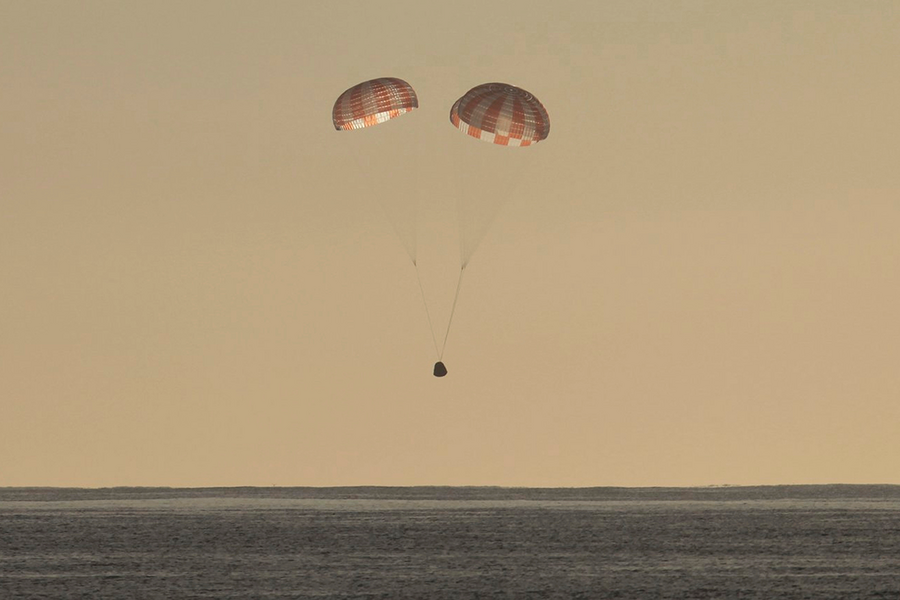Loaded with science, SpaceX Dragon capsule splashes back to Earth
In the age of same-day delivery, the International Space Station sent a package 249 miles down to Earth on Sunday in less than six hours.
There was, however, one sizable difference between it and the cardboard box sitting on your front doorstep. The SpaceX capsule that splashed into the waters off California carried more than 5,000 pounds of completed science experiments and used equipment.
The astronauts’ release of the capsule down to Earth further shows the relationship between SpaceX and NASA to support life and science aboard the International Space Station. The private company has become a lifeline to the six astronauts living aboard the ISS, bringing them food, equipment, and experiments, and returning some of those materials to Earth.
The Dragon capsule returned from its monthlong stay in orbit with more than 5,400 pounds of used equipment and experiments. Included in the return payload were stem cells used in medical research, samples from a tissue-regeneration experiment, and a device that tested the use of lasers to transmit data to Earth from space. Some of the cargo was removed by NASA support personnel and returned to the space agency immediately, while the Dragon capsule with other experiments and equipment will make its journey back to SpaceX’s test facility in McGregor, Texas, according to NASA.
The capsule first left for the space station about a month ago. Launched from the same pad used for NASA’s Apollo moon shots, the capsule was carried to the ISS via SpaceX’s Falcon 9 rocket, according to a press release from the company. At the time, it was filled with 5,500 pounds of food, equipment, and experiments.
The mission wasn’t without its hiccups. After the launch was delayed, SpaceX aborted its first delivery attempt, as The Christian Science Monitor reported:
After a GPS error scuttled its first docking attempt Wednesday, the Dragon capsule smoothly slipped close enough to the ISS for the space station’s robotic arm to snag the craft… In addition to a much needed food refresh, the capsule also contains more than 250 science experiments. NASA’s Lightning Imaging Sensor will record lightning strikes, which happen dozens of times per second somewhere on the planet. A crew of 40 mice will help scientists understand bone loss and the SAGE 3 ozone monitor will check in on the recovery of the planet’s ozone layer.
The mission marked SpaceX’s 10th resupply of the ISS, with one Frenchman, two Americans, and three Russians currently living aboard it.
The French astronaut, Thomas Pesquet, bid farewell to the Dragon capsule with a tweet.
This report contains material from the Associated Press.







